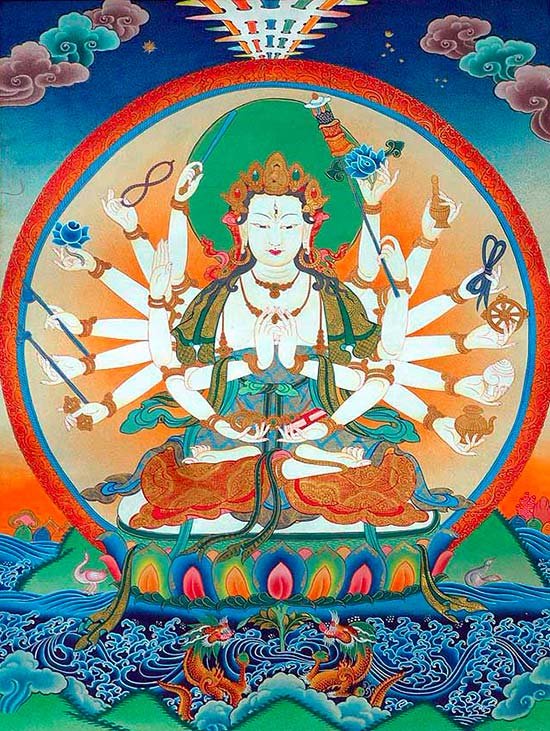Maha Prajnaparamita Sastra
by Gelongma Karma Migme Chödrön | 2001 | 941,039 words
This page describes “prajna of the shravakas” as written by Nagarjuna in his Maha-prajnaparamita-sastra (lit. “the treatise on the great virtue of wisdom”) in the 2nd century. This book, written in five volumes, represents an encyclopedia on Buddhism as well as a commentary on the Pancavimsatisahasrika Prajnaparamita.
1. Prajñā of the śrāvakas
These prajñās are of three kinds according to whether they belong to the śaikṣa (the saint who is not an arhat), the aśaikṣa (the saint who is an arhat) or someone who is neither śaikṣa nor aśaikṣa (naivaśaikṣanāśaikṣa).[1]
1) The knowledges of those who are neither śaikṣa nor aśaikṣa are, e.g., in the levels of unproductive wisdom, the meditation on the disgusting (aśubhabhāvanā), attention to the breath (ānāpānasmṛti), the four foundations of mindfulness (smṛtyupashthāna) of the world of desire (kāmadhātvavacara), and the [four nirvedhabhāgīyas]: heat (uṣmagata) summits (mūrdhan), patience (kṣānti) and the supreme worldly dharmas (laukikāgradharma).
2) The knowledges of the śaikṣa go from the duḥkhe dharmajñānakṣānti up to the prajñā of the diamond concentration (vajropamasamādhi) which the future arhat obtains during the ninth ānantaryamārga [of the bhavāgra].
3) The knowledges of the aśaikṣa are the prajñā that marks the ninth vimuktimārga of the arhat and all the aśaikṣa prajñās that follow, e.g., the knowledge of cessation (kṣayajñāna), the knowledge of the non-production of defilements (anutpādajñāna), etc.
These are the knowledges of the aśaikṣa, but it is the same for the prajñās of those who seek the state of pratyekabuddhahood.
Footnotes and references:
[1]:
Here the Mppś lists the various prajñās characterizing the Path of the śrāvakas in its various phases.
